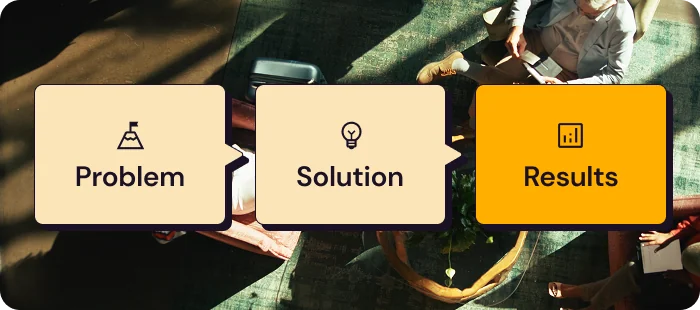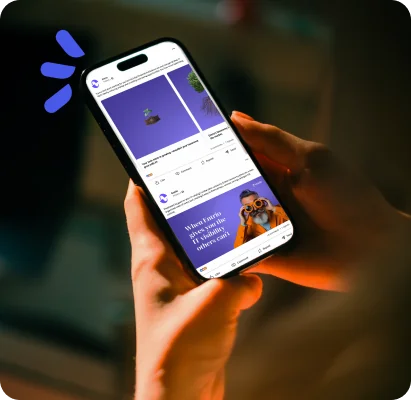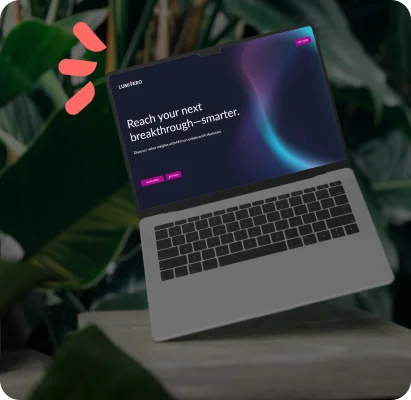
Case studies are one of the best forms of content to earn trust and turn prospects into leads.
It’s not hard to see why—case studies provide what buyers want most: hard proof you can do the job. Before engaging your company, prospects need to be convinced that you can deliver. Case studies are social proof that promise exactly that.
A strong case study (or several) is a key tool in your marketing toolkit. Let’s look at how you an start growing a library of case studies that help you convert more leads.
Ask your clients to participate
Creating a case study requires buy-in from the client. It’s their information you want to share, and you’ll need their cooperation to measure outcomes.
It’s tempting to wait until the end of a project to ask a client whether you can trouble them for a case study. After all, if they’re happy with the work, it shouldn’t be a big ask, right? In reality, this probably isn’t the best time to broach the topic. The client is already mentally shifting to their next task and all the normal bumps and frictions that arise during a project are still fresh in their minds.
Instead, float the idea of a case study during client onboarding, at the beginning of your working relationship. Demonstrate your commitment to their success by telling them their project is going to be so good it will warrant its own case study. Then ask whether they’d be open to the idea. Since the project hasn’t yet begun and you’re enthusiastic about their success, the odds are good they’ll say yes.
Throughout your regular work, allude to the case study from time to time. Share other client case studies so they can see what theirs will look like. You’ll also want to communicate how the case study benefits the client, not just you. For example, mention how the backlink you provide will boost their SEO.
Finally, make the case study part of the project, and work on it as you go. This way, the client sees it as a deliverable. You won’t have to chase them down at the end when they're busy moving on.
Highlight the client
It’s tempting to think about your case study as a vehicle to showcase how amazing your company is. Instead, your case studies should highlight the strengths and general awesomeness of your clients. Make them the star!
This approach makes it far more likely that a new client will want to participate. Who doesn’t like being promoted on the internet by a credible third party? The more value your client sees in participating, the more likely they are to say yes.
Putting your clients on a pedestal also supports business development. Prospects love to see you care enough to champion your clients' growth. Who wouldn’t want to work with a company like that?
Tell your client’s story
We think of case studies as a process of distilling facts. But the best case studies draw attention to normal human emotions and experiences.
Bring your case study to life by telling a story in the client’s own words. How did they feel at the beginning, middle and end? The more your reader identifies with the client, the more invested they’ll be in your solution.
Don’t shy away from the negative stuff. It’s normal for people to have doubts about new vendors. Prospects find it reassuring to know someone else had the same concerns—and that it turned out fine.
The best way to humanize a case study is by filming the project owner and letting them share their experiences in their own words. This is a step above and beyond, but it puts your testimonial on steroids. Many business challenges are universal and prospects can’t help but see themselves in authentic, real-world testimonials.
Video brings authenticity in a way a 50-word written testimonial just can’t match. Many businesses don’t use video testimonials because they think they lack video expertise. Don’t let quality concerns deter you from giving your clients a voice. Don’t worry about perfect video quality—real stories and valuable insights win over polish every time.
Creating the case study
Most case studies generally follow a similar structure:
- They’re short (just like this section). No one wants to plow through pages of data. One page is usually enough.
- They include visual elements. Think: images, charts, pull quotes, and bullet points.
The most effective case studies highlight a quote from the project manager with a headshot, if possible. Some companies may not want to be named—but featuring specific customers whenever possible strengthens your story.
The case study template
Case studies generally adhere to a common pattern:

- Problem: Start by clearly defining the challenge your client faced. Ideally, this should describe a problem your readers can relate to, helping them immediately connect with the story you're telling.
- Solution: Walk through the specific steps you took to solve the client’s problem. Include a reasonable level of detail—buyers want to understand exactly how you approach projects and deliver results.
- Results: Showcase the measurable outcomes your client achieved, using numbers whenever possible. Make this section as comprehensive and specific as you can—strong, detailed results are the centerpiece of an effective case study.
Readers want meaningful information that will apply to their own situation. Numbers are the best way to illustrate your point; for example,
“The client averaged a monthly savings of $2,348 in fuel costs after using our software.”
Case studies are all about social proof, and outcomes are the centerpiece of your case study. Feature your achievements in a prominent location where they’re impossible to miss.
Want to see a case study done right? Check out how we showcased Olive's success.
Promoting your case study
Case studies are powerful tools for converting site visitors into leads—but only if people can actually find them.
Treat your case study like any other valuable piece of content on your website: optimize it for search engines and user intent.
Start by selecting a focus keyword that:
- Accurately describes the service or solution you provided
- Has a healthy search volume
- Shows low competition (so you have a real chance of ranking)
For example, Sales Higher produced a case study for their list-building solutions. One of their first steps was to identify a keyword that clearly described the service and had a strong chance of ranking well on Google. They selected the phrase "list building services"—a search term with modest traffic and very low competition—which made it much easier to drive organic visitors to the study.
When optimizing your case studies, follow a similar approach:
- Choose keywords that reflect the actual work performed
- Consider the strength of your website compared to competitors
- Avoid highly competitive terms that would push you to page 2 or beyond
Pro tip: Less competitive keywords mean you'll have an easier time ranking—but they also mean fewer people are searching for them. It's a balancing act between visibility and achievability.
Done right, case studies can become a steady stream of traffic, leads and proof of your expertise—on autopilot.
Add case studies to your marketing toolkit
You’ve learned how to create compelling case studies that demonstrate real value to your prospects. Now, it’s time to add them to your marketing toolkit and start converting more leads!
Case studies are a key way to showcase the results you can deliver. By integrating case study creation into your regular client process, you’ll build a library of success stories that drive trust and engagement.
At Accelity, we specialize in crafting case studies that don’t just tell your story—but convert your audience. Learn more about how we can help.
Subscribe to our newsletter
Curated content, news articles, team updates and more.



